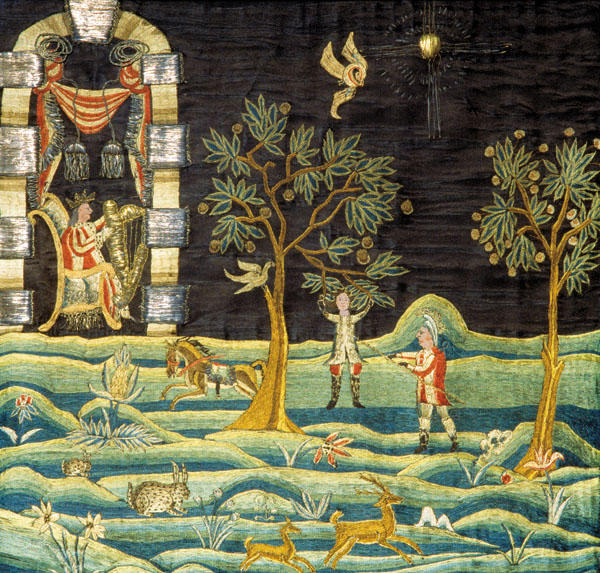Image Details

Lyman Allyn Art Museum at Connecticut College, New London, Connecticut
Ensnared by his hair, David’s once-rebellious son Absalom hangs helpless from a tree as David’s general Joab stabs him, in this needlework (c. 1770) by American Colonial artist Faith Robinson Trumbull. The espionage needs of King David differed greatly from those of earlier Israelite leaders. With a powerful army behind him, David turned to spying on his own subjects and even his own family to preserve his throne. When Absalom mounted a rebellion, forcing David to flee Jerusalem, David had his friend Hushai pose as a loyal counselor to the upstart and report everything he heard to David’s network of spies (2 Samuel 15). This way, David received advance warning of Absalom’s planned attack and was able to turn the tables on him.
Although in the Bible, David deeply mourns Absalom’s death (he asked Joab to capture him, but not kill him), in this needlework David appears relatively calm, playing his harp at upper left. The needlework was made shortly after the Boston Massacre of 1770 and reflected the American colonists’ rebellious mood. Trumbull depicted Absalom as a martyred patriot, Joab as a Redcoat, and David as the remote and repressive English king, George III.
